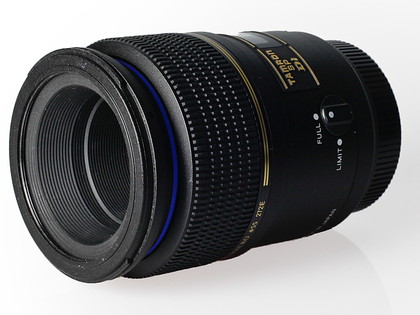Why you can trust TechRadar

Still, the changeover between the two modes is far more preferable than the more common small and fiddly switch, and the ring itself is just slack enough to hold its position while still being easy to turn.
The lens' only notable omission is an image stabilisation system, which is of particular significance to Canon and Nikon users on account of these DSLRs not offering sensor-based stabilisation.
At the Tamron SP AF 90mm f/2.8 Di Macro 1:1's bargain price this isn't unexpected, but it does limit the minimum usable shutter speed, particularly for cropped-sensor bodies where the effective focal length increases.
The lens' overall image quality is excellent at times, and at others less so. At the maximum f/2.8 aperture its central sharpness is more than impressive, although, unfortunately, it fails to maintain this towards the edges, which are considerably softer.
Once the lens is stopped down it's able to put in a far more consistent performance, and its overall sharpness compares well with that of the handful of macro lenses priced £200-300 higher.
At f/16 and above its consistency wanes once more, although even here it proves it's still capable of producing relatively sharp and detailed images. Elsewhere, some chromatic aberrations are visible in the centre of images, although this doesn't appear to get significantly worse, if at all, as you venture further out towards the edges of the frame.
Control over distortion is about average, only being marginally worse than Canon's EF 100 f/2.8 Macro USM and Sony's 100mm f/2.8 Macro.
Verdict
In summary, although you get what you pay for with this lens, but you sometimes get the unexpected bonus of a little more. True, with its noisy, basic focusing motor, and no internal focus, it's hardly the most refined option, but its sharpness compares more than favourably with more expensive lenses, and its price can't be argued with.
